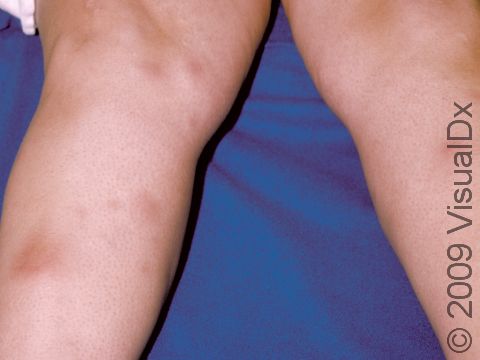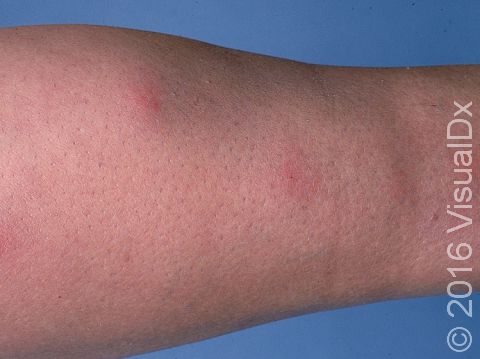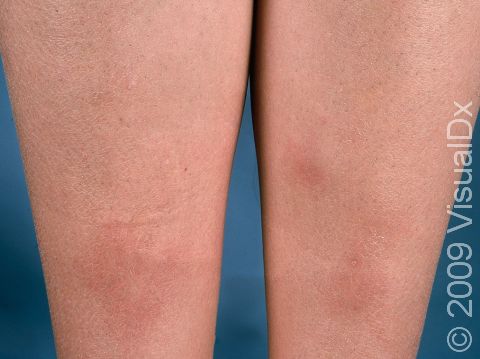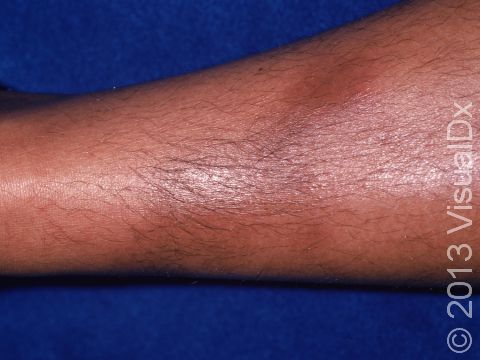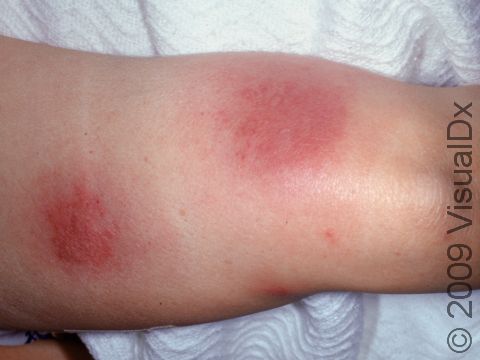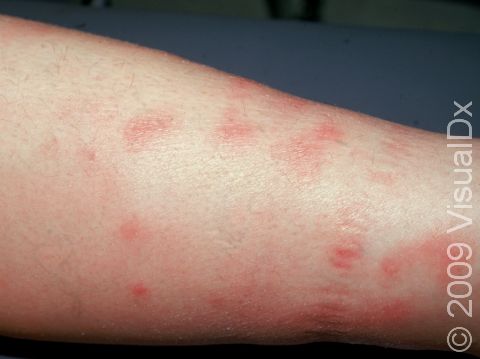Erythema Nodosum
Erythema nodosum is a skin disorder that produces red bumps under the skin that can be tender. They usually occur due to some underlying disease or use of a medication. The bumps of erythema nodosum can occur anywhere on the body but are most common on the shins. They look like raised bumps or bruises that change from pink to blue-brown.
Who's At Risk?
Erythema nodosum can occur in patients of any age, sex, or race. The inflammation is most common in females, particularly in the age range 18–34 (teens and young adults). In addition, erythema nodosum tends to occur in families who are exposed to the same trigger. While their cause to a particular individual may be unknown, people who receive immunity-weakening drugs (eg, chemotherapy drugs), oral contraceptives, and antibiotics are more likely to develop them. Also, infections and cancers can predispose a person to developing erythema nodosum.
Signs & Symptoms
The most common locations for erythema nodosum include:
- Shins
- Knees, ankles, or thighs
- Forearms
- Face and neck
Erythema nodosum appears as one or more reddish, warm, and painful lumps (nodules), ranging in size from 1–10 cm.
The onset of erythema nodosum may be associated with fever, generalized achiness, leg swelling, or joint pain.
Individual nodules of erythema nodosum usually last from 1–2 weeks, but new lesions may continue to appear for up to 6 weeks. When an individual lesion of erythema nodosum has resolved, it may leave behind a temporary bruise, which subsequently fades to normal-appearing skin.
Self-Care Guidelines
Although erythema nodosum may occur on its own, it is more often associated with a medication or with an underlying infection or medical condition. Therefore, it is important to see a physician in order to investigate any possible health problems. In the meantime, however, the tenderness of the skin lesions may be alleviated by the following:
- Restriction of physical activity or bed rest
- Elevation of the legs (if they are affected)
- Cool or warm compresses
Generally, people with erythema nodosum do quite well, especially once any underlying medical conditions have been treated.
Treatments
After diagnosing you with erythema nodosum, your physician will attempt to identify a possible cause, such as medication, infection, or medical condition. The doctor may order diagnostic tests such as blood work, a chest X-ray, or a throat culture. If an underlying cause is identified, then the physician will treat it appropriately (for example, by discontinuing a medication, prescribing antibiotics for an infection, or treating a health problem).
Once those investigations and treatments are under way, your health care provider may try the following measures to make you more comfortable:
- Restriction of physical activity or bed rest
- Anti-inflammatory medications such as ibuprofen (aspirin should NOT be given to any child aged 18 years or younger)
- Potassium iodide
- Steroids (either taken in pill form or injected directly into the lesions)
Visit Urgency
Since erythema nodosum can be associated with underlying infections or health problems, a physician should be consulted within a few days of noticing the skin lesions.
References
Bolognia, Jean L., ed. Dermatology, pp.724, 1455, 1552-1555. New York: Mosby, 2003.
Freedberg, Irwin M., ed. Fitzpatrick’s Dermatology in General Medicine. 6th ed, pp.1056, 1059, 1849, 1934, 1944. New York: McGraw-Hill, 2003.
Last modified on August 16th, 2022 at 2:45 pm

Not sure what to look for?
Try our new Rash and Skin Condition Finder
